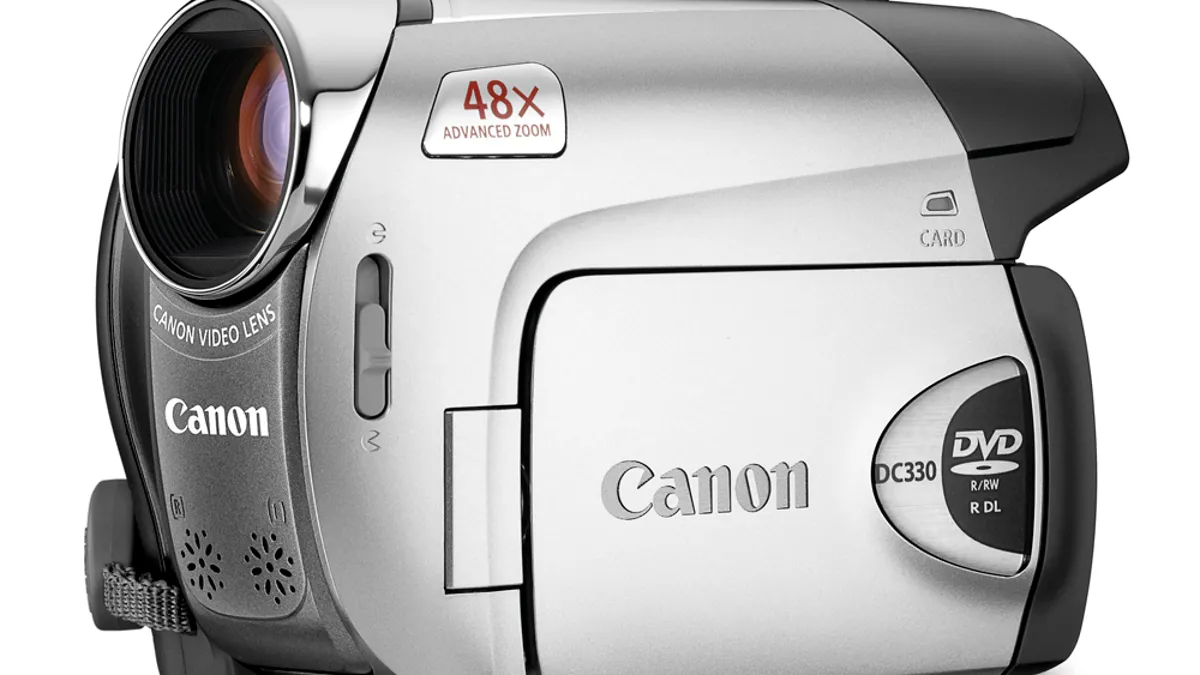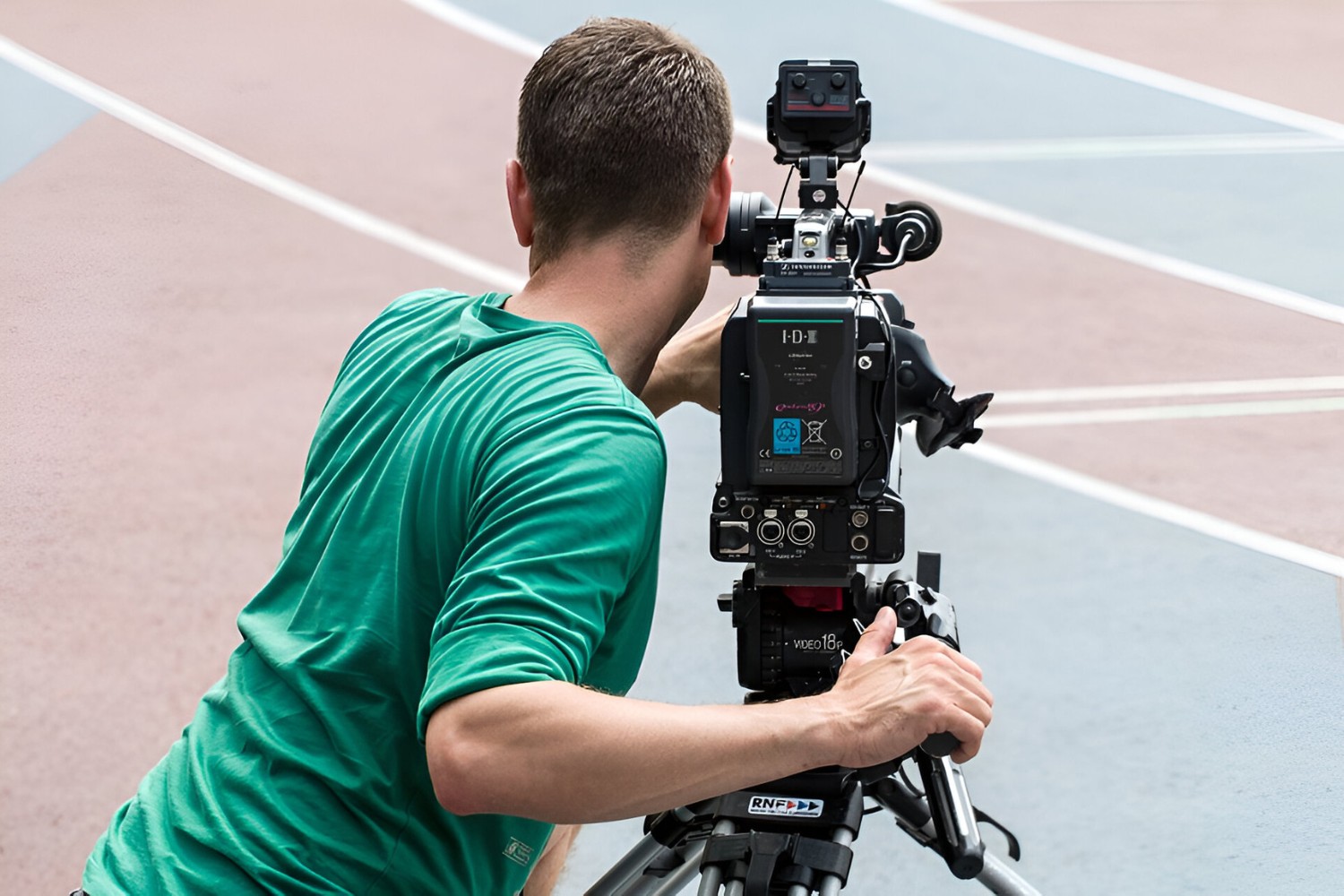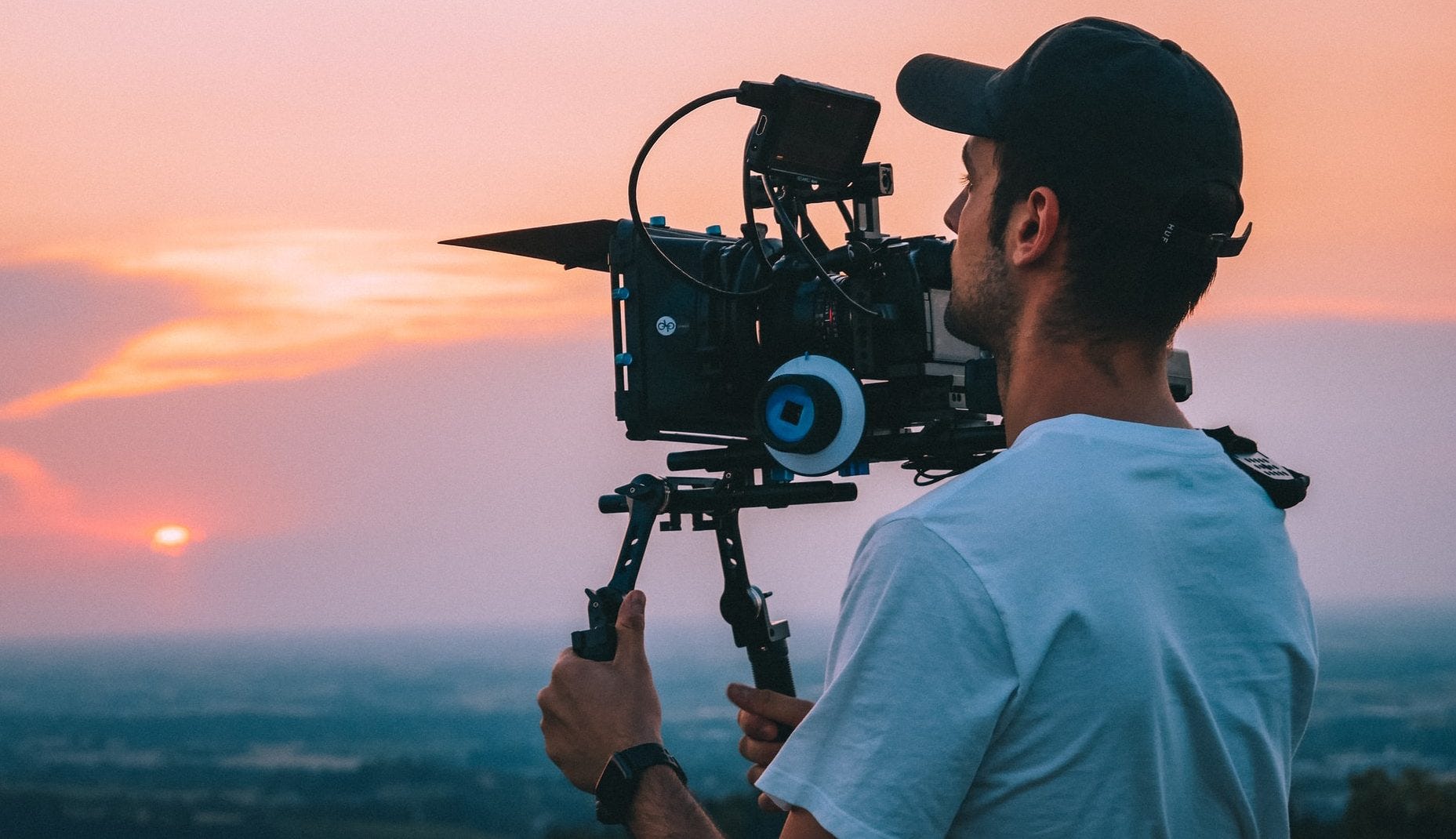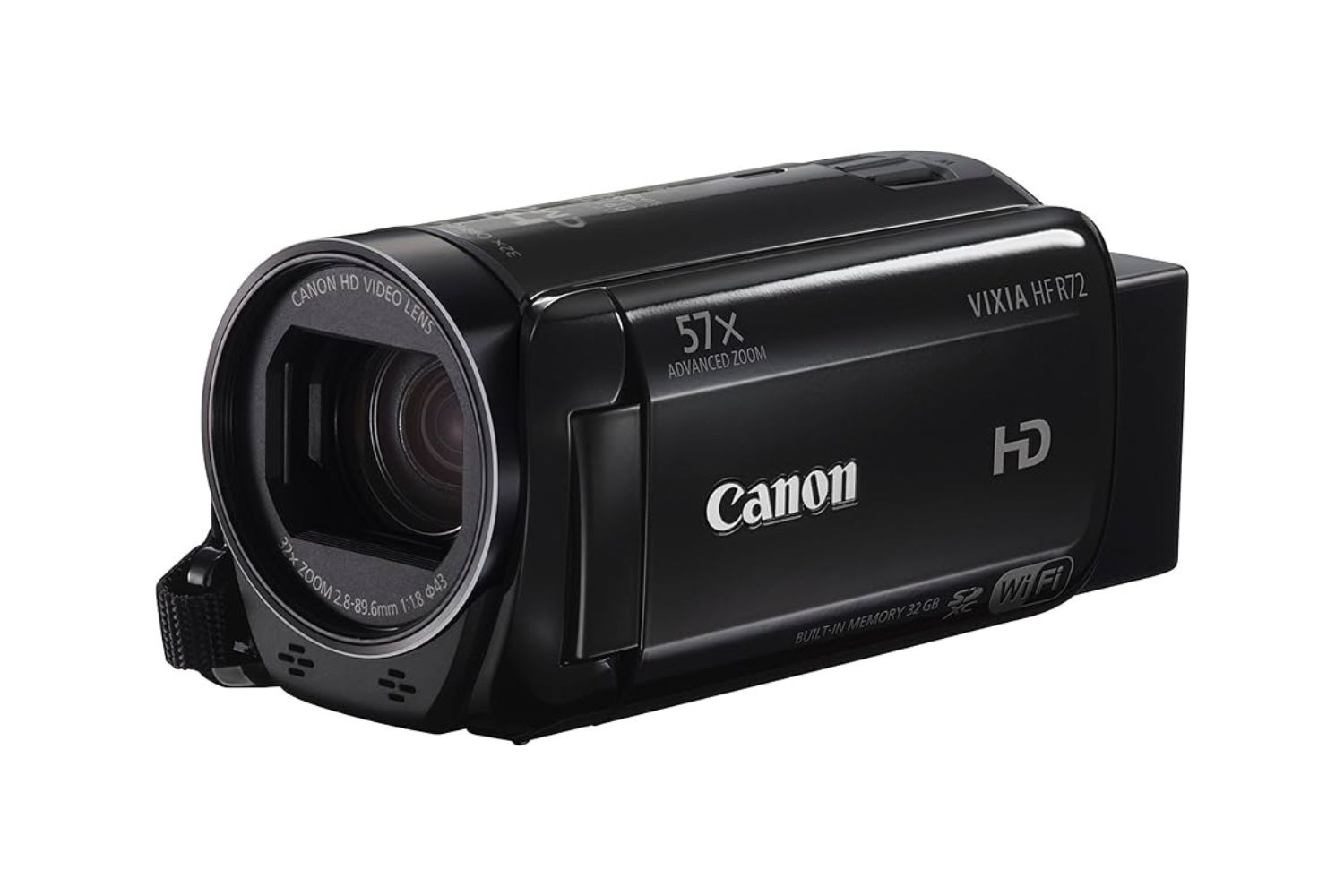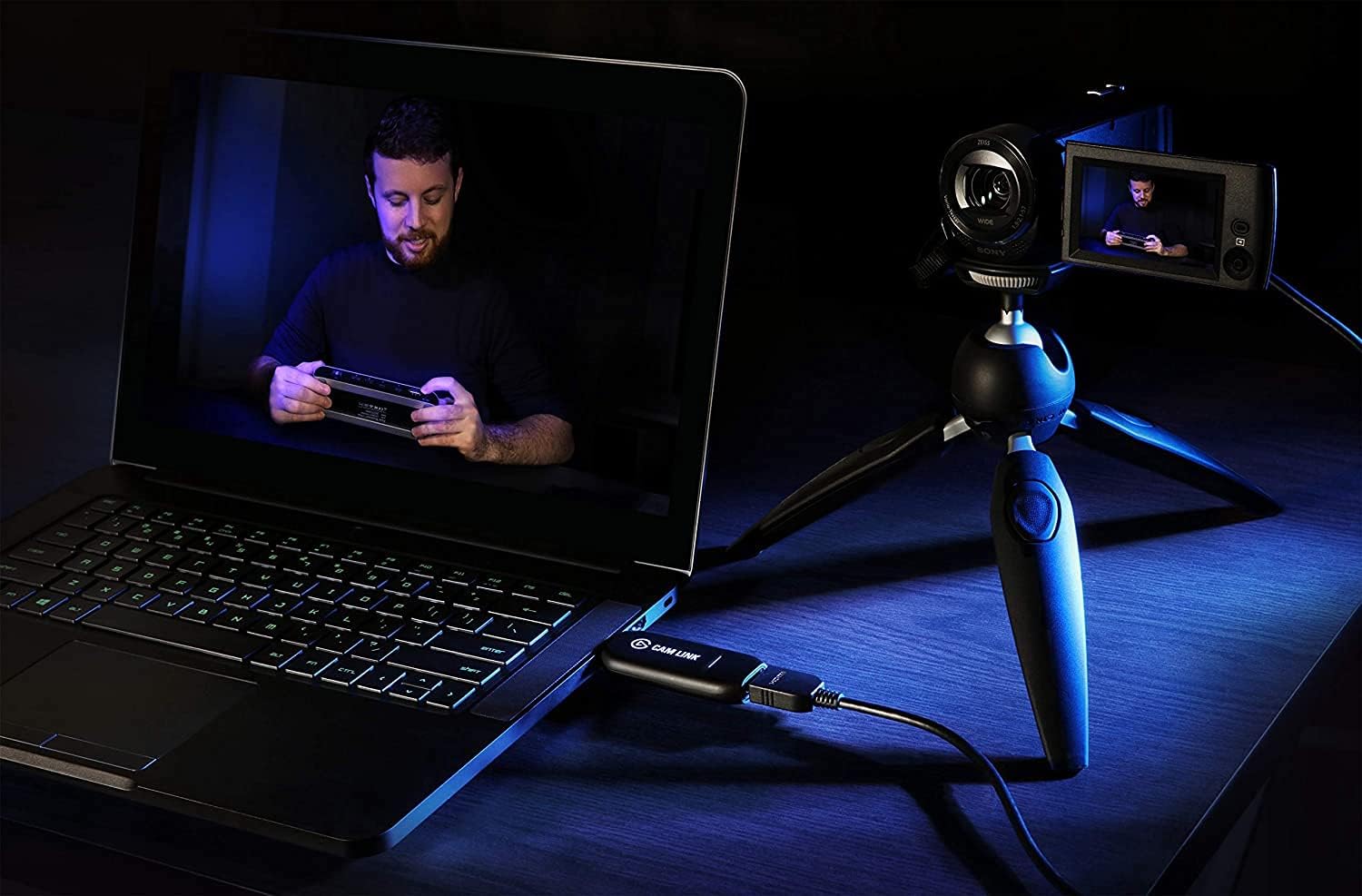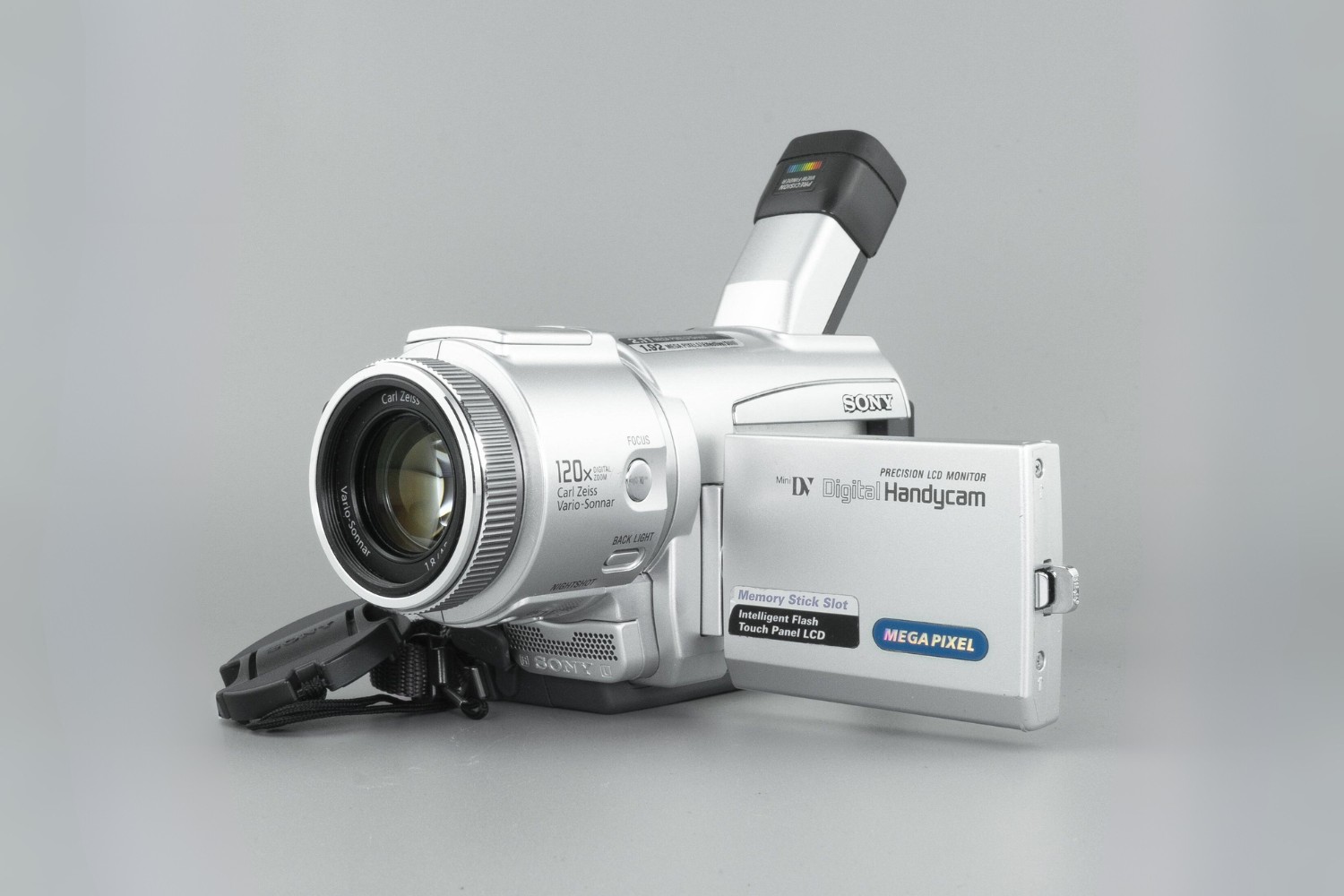Introduction
Introduction
When it comes to capturing life's precious moments, having the right camcorder can make all the difference. Whether you're a budding filmmaker, a vlogger, or simply want to document family events, choosing the perfect camcorder requires careful consideration of several key factors. From video and audio quality to image stabilization and battery life, each aspect plays a crucial role in determining the overall performance of a camcorder. In this guide, we will explore the essential features to look for when selecting a camcorder, empowering you to make an informed decision that aligns with your specific needs and preferences.
A camcorder is more than just a device for recording; it's a tool for storytelling and preserving memories. The right camcorder can elevate the quality of your videos, making them more engaging and immersive for your audience. Whether you're shooting a travel vlog, capturing a family reunion, or creating professional content, the features of a camcorder can significantly impact the final result. By understanding what to look for in a camcorder, you can ensure that your videos are of the highest quality, with clear audio, steady footage, and versatile functionality.
As technology continues to advance, the market is flooded with a wide array of camcorders, each boasting unique features and capabilities. Navigating through this abundance of options can be overwhelming, but by focusing on the key considerations outlined in this guide, you can confidently assess the suitability of different camcorders for your specific needs. Whether you prioritize portability, advanced manual controls, or exceptional low-light performance, there's a camcorder out there that's perfectly suited to your requirements.
Choosing the right camcorder is a personal decision that hinges on your intended use, budget, and desired features. By delving into the intricacies of video quality, audio performance, and other essential factors, you'll be equipped to make a well-informed choice that aligns with your creative vision and practical requirements. Let's embark on this journey to uncover the essential features that make a camcorder stand out, empowering you to capture life's moments with unparalleled clarity and artistry.
Video Quality
When selecting a camcorder, one of the most critical factors to consider is the video quality it can deliver. The video quality directly impacts the clarity, sharpness, and overall visual appeal of your recordings. Whether you’re capturing breathtaking landscapes, documenting family milestones, or creating professional content, the ability of your camcorder to produce high-quality video is paramount.
Resolution plays a pivotal role in determining video quality. While Full HD (1080p) has been the standard for many years, the emergence of 4K resolution has revolutionized the industry, offering four times the pixels of Full HD. This ultra-high resolution delivers stunning clarity and detail, making it ideal for capturing intricate scenes and future-proofing your content for advancements in display technology.
Another crucial aspect of video quality is the camcorder’s sensor size. Larger sensors typically result in better low-light performance and enhanced dynamic range, allowing for vibrant, lifelike colors and reduced noise in challenging lighting conditions. Additionally, the type of sensor, such as CMOS or CCD, can impact the overall image quality, with CMOS sensors often excelling in capturing fast-moving subjects and offering superior power efficiency.
Furthermore, the presence of advanced features like high frame rate recording, HDR (High Dynamic Range), and professional color profiles can elevate the visual impact of your videos, providing greater flexibility in post-production and enhancing the overall cinematic quality of your recordings.
When assessing video quality, it’s essential to consider not only the resolution and sensor size but also the camcorder’s ability to maintain sharp focus, accurate color reproduction, and smooth motion. Look for camcorders with advanced autofocus systems, wide aperture lenses, and optical image stabilization to ensure that your videos are consistently sharp and visually compelling.
Ultimately, the video quality of a camcorder sets the foundation for captivating storytelling and immersive visual experiences. By prioritizing superior resolution, sensor performance, and advanced video features, you can elevate the impact of your videos, creating content that resonates with your audience and stands out in an increasingly competitive digital landscape.
Audio Quality
While video quality is a crucial consideration when choosing a camcorder, the importance of audio quality cannot be overstated. Clear, high-fidelity audio enhances the overall impact of your videos, immersing viewers in the accompanying sounds and dialogue. Whether you’re capturing live performances, conducting interviews, or documenting everyday moments, the audio capabilities of your camcorder play a pivotal role in delivering a truly engaging viewing experience.
When evaluating a camcorder’s audio quality, focus on features such as built-in microphones, external microphone connectivity, and audio recording formats. Built-in microphones with advanced directional capabilities, such as stereo or surround sound, can capture rich, immersive audio, bringing depth and realism to your recordings. Additionally, the ability to connect external microphones, including lavalier mics, shotgun mics, and wireless systems, expands your creative flexibility and ensures optimal audio capture in various environments.
Furthermore, the choice of audio recording format is essential for preserving the fidelity of sound. Look for camcorders that support uncompressed or high-bitrate audio formats, such as PCM or WAV, to retain the full dynamic range and nuances of the recorded sound. This is particularly valuable in scenarios where audio post-processing and editing are integral to your production workflow.
Advanced audio features, including adjustable gain control, wind noise reduction, and audio level meters, contribute to the versatility and professional quality of a camcorder’s audio capabilities. These features empower you to adapt to diverse recording situations, minimize unwanted noise, and maintain consistent audio levels, ensuring that your videos are accompanied by clear, balanced sound.
Moreover, the integration of audio monitoring tools, such as headphone jacks and audio level indicators, enables real-time assessment of audio quality during recording, allowing for immediate adjustments and ensuring that critical audio moments are captured with precision.
Ultimately, the synergy between high-quality video and audio is the cornerstone of impactful storytelling. By prioritizing the audio capabilities of a camcorder, you can elevate the emotional resonance of your videos, ensuring that every sound, from subtle whispers to powerful melodies, is faithfully reproduced, enriching the viewer’s experience and leaving a lasting impression.
Image Stabilization
When capturing videos with a camcorder, the importance of image stabilization cannot be overstated. Smooth, steady footage enhances the professional quality of your recordings and minimizes visual distractions, ensuring that viewers remain focused on the content rather than the jarring effects of camera shake. Whether you’re filming handheld shots, panning across scenic vistas, or recording dynamic action sequences, reliable image stabilization is essential for achieving polished, professional-looking videos.
Camcorders employ various technologies to stabilize footage, including optical image stabilization (OIS), electronic image stabilization (EIS), and hybrid stabilization systems. Optical image stabilization relies on physical lens adjustments to counteract camera movements, resulting in consistently smooth and steady footage, particularly effective for handheld shooting and low-light conditions. On the other hand, electronic image stabilization utilizes sensor-based processing to compensate for motion, providing stabilization benefits across a wider range of shooting scenarios.
Advanced camcorders often feature hybrid stabilization systems that combine the strengths of both optical and electronic stabilization, delivering optimal performance in diverse filming conditions. By leveraging gyroscopic sensors, accelerometers, and sophisticated algorithms, these hybrid systems effectively mitigate camera shake, ensuring that your videos maintain a professional, cinematic quality.
Furthermore, the advent of digital stabilization technologies, such as warp stabilizers and post-capture stabilization algorithms, has expanded the scope of image stabilization, allowing for additional refinement and correction of footage during the post-production phase. These digital tools complement in-camera stabilization, offering an extra layer of assurance for achieving impeccably smooth, artifact-free videos.
For vloggers, documentary filmmakers, and content creators who prioritize handheld shooting, the presence of advanced stabilization features, such as active mode stabilization, motion prediction, and customizable stabilization settings, can significantly enhance the creative possibilities and production value of their videos. These features enable seamless transitions, fluid camera movements, and the freedom to explore dynamic filming techniques without compromising visual stability.
Ultimately, image stabilization is a cornerstone of professional video production, ensuring that your footage exudes a polished, cinematic quality. By prioritizing camcorders with robust stabilization capabilities, you can elevate the visual impact of your videos, captivating your audience with smooth, immersive storytelling that remains free from the distractions of camera shake.
Low Light Performance
When assessing the capabilities of a camcorder, particularly for capturing video in challenging lighting conditions, the low light performance is a critical factor that significantly impacts the quality and versatility of your recordings. Whether you’re documenting evening events, exploring dimly lit environments, or shooting cinematic scenes with atmospheric lighting, a camcorder’s ability to excel in low light situations is essential for achieving compelling, visually striking footage.
The low light performance of a camcorder is influenced by several key factors, including the size and sensitivity of the image sensor, the aperture of the lens, and the efficiency of the camera’s noise reduction algorithms. Larger sensors, such as those found in professional-grade camcorders, can capture more light, resulting in improved dynamic range, reduced noise, and enhanced detail in low light settings. Additionally, sensors with higher native ISO capabilities excel in preserving image quality in dimly lit environments, allowing for the capture of rich, nuanced footage without excessive noise or loss of detail.
The aperture of the camcorder’s lens also plays a crucial role in low light performance. Wider apertures, denoted by lower f-stop values, enable more light to reach the sensor, enhancing the camera’s ability to capture clear, well-exposed images in low light conditions. Camcorders equipped with fast, high-quality lenses offer greater flexibility in challenging lighting scenarios, empowering you to achieve captivating visuals with minimal reliance on artificial lighting sources.
Furthermore, the implementation of advanced noise reduction technologies, such as multi-frame noise reduction and intelligent noise processing algorithms, contributes to the preservation of image quality in low light environments, ensuring that your videos exhibit minimal noise and maximum clarity, even in dimly lit scenes.
For content creators who specialize in documentary filmmaking, event coverage, or artistic expression, the low light performance of a camcorder directly influences the creative possibilities and visual impact of their videos. The ability to capture evocative, atmospheric footage in natural or ambient lighting conditions is essential for conveying mood, emotion, and storytelling depth, making low light performance a crucial consideration in the selection of a camcorder.
By prioritizing camcorders with exceptional low light performance, you can confidently venture into diverse filming environments, capturing compelling footage with remarkable clarity and visual richness, regardless of the available light. The ability to excel in low light situations empowers you to unleash your creative vision, bringing captivating stories to life with immersive, cinematic imagery that transcends the limitations of traditional lighting constraints.
Zoom Range
The zoom range of a camcorder is a pivotal feature that directly influences your ability to capture diverse perspectives, frame compelling shots, and adapt to varying shooting scenarios. Whether you’re documenting distant subjects, capturing intricate details, or exploring the nuances of visual storytelling, the versatility and precision of a camcorder’s zoom capabilities play a crucial role in achieving impactful, visually engaging footage.
Camcorders typically offer two primary types of zoom: optical zoom and digital zoom. Optical zoom, which relies on physical lens adjustments, delivers superior image quality and magnification without sacrificing clarity, making it ideal for capturing distant subjects with precision and detail. The optical zoom range of a camcorder determines the extent to which you can magnify your subjects, providing flexibility in composition and enabling dynamic framing options.
Digital zoom, on the other hand, enhances the magnification beyond the optical zoom limit through software-based processing. While digital zoom extends the apparent reach of the lens, it is important to note that it may result in a reduction in image quality, as it essentially crops and enlarges the image. As such, optical zoom is generally preferred for maintaining the highest level of visual fidelity and detail in your recordings.
When evaluating the zoom range of a camcorder, consider the focal length of the lens and the magnification factor it offers. A camcorder with a broad focal length range, encompassing wide-angle perspectives and telephoto capabilities, provides greater flexibility in composing shots and adapting to different shooting environments. This versatility is particularly valuable for capturing dynamic scenes, from expansive landscapes to tightly framed subjects, without the need to physically adjust your position.
For content creators who specialize in wildlife videography, sports coverage, or event documentation, an extensive zoom range empowers them to capture compelling, immersive footage from a distance, preserving the authenticity and spontaneity of the subject matter without intruding on the scene. Additionally, the precision and smoothness of the zoom control mechanisms, including manual zoom rings and variable speed zoom levers, contribute to the finesse and creative control you can exert over your compositions.
By prioritizing camcorders with versatile zoom ranges and optical zoom capabilities, you can confidently explore a wide spectrum of visual storytelling, from expansive vistas to intimate details, ensuring that your videos are imbued with dynamic perspectives and captivating visual depth. The ability to adapt to diverse shooting scenarios, magnify distant subjects, and frame compelling compositions empowers you to unleash your creativity and capture evocative, immersive footage that resonates with your audience.
Manual Controls
Manual controls are an essential aspect of a camcorder that empowers videographers and content creators to fine-tune their creative vision, exercise precise technical control, and adapt to dynamic filming conditions. Whether you’re a seasoned professional or an aspiring filmmaker, the availability of comprehensive manual controls enhances your ability to craft visually compelling, technically precise videos that reflect your unique artistic style and storytelling approach.
One of the primary manual controls that significantly impacts video production is the ability to adjust exposure settings, including shutter speed, aperture, and ISO sensitivity. Manual exposure control allows for precise manipulation of the camera’s sensitivity to light, the duration of each frame, and the size of the lens aperture, enabling you to achieve optimal exposure and creative visual effects, such as motion blur or selective focus, in diverse lighting conditions.
Furthermore, manual focus capabilities are integral for achieving precise, nuanced control over the sharpness and depth of field in your videos. The ability to manually adjust focus allows for seamless transitions between subjects, selective emphasis on specific elements within the frame, and the creative exploration of visual storytelling techniques, such as rack focus and selective focus pulls.
White balance adjustments, another crucial manual control, enable you to accurately calibrate the color temperature of your videos, ensuring faithful reproduction of natural hues and consistent color rendering across different lighting environments. This level of color management is essential for maintaining visual fidelity and conveying the intended mood and atmosphere in your recordings.
For videographers who specialize in cinematic storytelling, documentary filmmaking, or artistic expression, the presence of manual controls for picture profiles, color grading, and gamma curve adjustments offers unparalleled creative flexibility and precision in shaping the visual character of their videos. These controls empower you to tailor the tonal range, color response, and dynamic range of your footage, infusing it with a distinct, cinematic aesthetic that aligns with your creative vision.
Additionally, manual audio controls, such as adjustable microphone gain, audio level meters, and customizable audio input settings, contribute to the professional quality and precision of sound recording, allowing for optimal capture of dialogue, ambient sounds, and musical performances with nuanced clarity and balance.
By prioritizing camcorders with robust manual controls, you can elevate the technical and artistic finesse of your video production, ensuring that your recordings reflect your creative intent with precision, expressive depth, and immersive visual and auditory richness.
Battery Life
The battery life of a camcorder is a crucial consideration for videographers and content creators who rely on uninterrupted filming sessions to capture compelling footage. A robust and long-lasting battery ensures that you can focus on the creative process without the constant interruption of frequent recharging or battery replacements, allowing for seamless, continuous recording and the preservation of spontaneous, unscripted moments.
When evaluating the battery life of a camcorder, it’s essential to consider factors such as battery capacity, power consumption, and the efficiency of the camera’s energy management system. High-capacity batteries, often measured in milliampere-hours (mAh), provide extended operational time, enabling prolonged shooting sessions without the need for frequent battery swaps or recharges.
Furthermore, the power consumption of the camcorder, including the demands of the imaging sensor, display screen, image stabilization mechanisms, and audio recording components, directly influences the overall battery life. Camcorders with efficient power management systems, low standby power consumption, and adaptive energy-saving features maximize the longevity of the battery, ensuring optimal performance throughout extended filming sessions.
For videographers who specialize in on-location shoots, event coverage, or documentary filmmaking, the availability of interchangeable or external battery options enhances the flexibility and endurance of their filming endeavors. The ability to quickly swap depleted batteries for fully charged ones, or connect external power sources for extended operation, ensures that critical moments are captured without disruption, preserving the authenticity and continuity of the visual narrative.
Moreover, the integration of battery status indicators, real-time power consumption displays, and intelligent battery management features, such as predictive remaining battery life estimates, empowers videographers to proactively manage their power resources, plan shooting schedules, and mitigate the risk of unexpected power depletion during crucial recording sessions.
By prioritizing camcorders with long-lasting battery life and efficient power management, you can embark on filming expeditions with confidence, knowing that your equipment is equipped to sustain extended creative endeavors, spontaneous captures, and immersive storytelling without the constraint of frequent battery changes or charging interruptions. The ability to rely on a robust battery ensures that your focus remains on the art of visual storytelling, unencumbered by the limitations of power constraints.
Size and Weight
The size and weight of a camcorder are pivotal considerations for videographers and content creators, directly influencing portability, maneuverability, and the overall practicality of the filming equipment. Whether you’re embarking on outdoor adventures, conducting on-location shoots, or navigating dynamic filming environments, the compactness and lightweight design of a camcorder can significantly impact your ability to capture spontaneous moments and maintain creative agility.
Compact and lightweight camcorders offer enhanced mobility and versatility, allowing for effortless handling, swift setup, and unobtrusive filming in diverse settings. The portability of a camcorder is particularly valuable for vloggers, travel videographers, and documentary filmmakers who prioritize agility and unencumbered exploration of their surroundings, ensuring that the equipment seamlessly integrates into their creative process without impeding their movements or interactions with the environment.
Furthermore, the ergonomic design and balanced weight distribution of a camcorder contribute to extended filming comfort, reducing fatigue during prolonged shooting sessions and enabling steady, controlled operation, even in dynamic or physically demanding filming scenarios. The ability to maintain a secure grip and stable handling of the camcorder is essential for achieving smooth, professional-quality footage without the encumbrance of excessive bulk or unwieldy dimensions.
For videographers who specialize in run-and-gun filming, event coverage, or immersive storytelling in unpredictable environments, the compact size and lightweight construction of a camcorder facilitate discreet, unobtrusive recording, allowing for seamless integration into the unfolding narrative and the preservation of authentic, unscripted moments without drawing undue attention to the filming process.
Additionally, the compact form factor of a camcorder enhances its compatibility with a wide range of filming accessories, such as stabilizers, tripods, and mounting rigs, enabling versatile adaptation to different shooting styles and creative techniques. The ability to seamlessly integrate the camcorder into a comprehensive filming setup empowers videographers to explore diverse visual storytelling approaches while maintaining the advantages of compact, portable equipment.
By prioritizing compact, lightweight camcorders, you can embrace a fluid, uninhibited approach to visual storytelling, seamlessly integrating your equipment into dynamic filming environments, capturing spontaneous moments with ease, and maintaining unencumbered creative agility. The size and weight of the camcorder become enablers of immersive, unobtrusive storytelling, preserving the authenticity and spontaneity of the visual narrative without compromise.
Price and Budget Considerations
When evaluating camcorders, price and budget considerations play a pivotal role in the decision-making process, directly influencing the accessibility, features, and overall value of the chosen equipment. Understanding the relationship between price and the desired features empowers videographers and content creators to make informed choices that align with their creative vision, technical requirements, and financial constraints.
The price of a camcorder often reflects a combination of factors, including the quality of the imaging sensor, the sophistication of video recording capabilities, the presence of advanced features such as image stabilization and manual controls, and the overall build quality and durability of the equipment. Higher-priced camcorders typically offer superior image quality, enhanced low-light performance, and a broader range of creative controls, catering to professional videographers and filmmakers with specific technical demands and artistic aspirations.
For videographers with budget constraints or those seeking entry-level options, competitively priced camcorders offer a balance between essential features, user-friendly operation, and affordability, providing an accessible entry point into the world of video production and content creation. These camcorders often prioritize ease of use, compact design, and versatile functionality, making them ideal for vloggers, amateur filmmakers, and enthusiasts seeking to explore their creative potential without a substantial financial investment.
Moreover, the availability of diverse pricing tiers and bundled accessory packages allows videographers to tailor their investment based on their immediate needs and long-term aspirations. Considerations such as warranty coverage, included accessories, and compatibility with existing filming gear can significantly impact the overall value proposition of a camcorder, ensuring that the chosen equipment aligns with the videographer’s budget and long-term growth potential.
When assessing price and budget considerations, it’s essential to weigh the long-term value and return on investment offered by a camcorder, taking into account its potential to support evolving creative endeavors, expand technical capabilities, and contribute to the production of high-quality, engaging content. Additionally, the availability of financing options, trade-in programs, and promotional discounts can further enhance the affordability and accessibility of premium camcorders for videographers seeking to elevate their craft.
By carefully evaluating price and budget considerations, videographers can align their investment with their creative aspirations, technical requirements, and financial parameters, ensuring that the chosen camcorder represents a harmonious balance of features, quality, and affordability. The ability to make informed decisions based on the intersection of price and value empowers videographers to embark on their creative journey with confidence, equipped with the tools that best encapsulate their vision and potential.
Conclusion
Choosing the right camcorder is a multifaceted endeavor that hinges on a nuanced understanding of essential features, technical capabilities, and creative aspirations. From video and audio quality to image stabilization, low light performance, and manual controls, each aspect contributes to the overall versatility, quality, and visual impact of the chosen equipment. By carefully evaluating these factors, videographers and content creators can make informed decisions that align with their specific needs, technical requirements, and budget considerations.
Ultimately, the ideal camcorder is one that seamlessly integrates into the creative process, empowering videographers to capture compelling, visually engaging footage without the encumbrance of technical limitations or creative constraints. The synergy between high-quality video and audio, reliable image stabilization, versatile zoom capabilities, and intuitive manual controls forms the foundation for immersive, captivating storytelling, allowing videographers to explore diverse visual styles, adapt to dynamic filming environments, and convey their narrative with precision and artistry.
Furthermore, considerations such as battery life, size, weight, and price play a pivotal role in shaping the practicality, mobility, and accessibility of the chosen camcorder, ensuring that it harmonizes with the videographer’s filming style, creative agility, and long-term growth potential. The ability to strike a balance between technical sophistication, creative empowerment, and financial feasibility empowers videographers to embark on their visual storytelling journey with confidence, equipped with the tools that best encapsulate their vision and potential.
As technology continues to evolve and the landscape of video production expands, the selection of a camcorder becomes a strategic investment in the pursuit of compelling, visually immersive content. By embracing the interplay of technical features, creative potential, and budget considerations, videographers can unlock the full spectrum of visual storytelling, capturing moments of authenticity, emotion, and artistic expression with unparalleled clarity and impact.
Ultimately, the ideal camcorder is not merely a tool for recording; it is a conduit for creativity, a vessel for storytelling, and a gateway to immersive, visually compelling narratives. By prioritizing the essential features outlined in this guide, videographers can embark on their creative journey with confidence, knowing that their chosen camcorder is poised to elevate their craft, expand their creative horizons, and capture life’s moments with unparalleled clarity and artistry.









